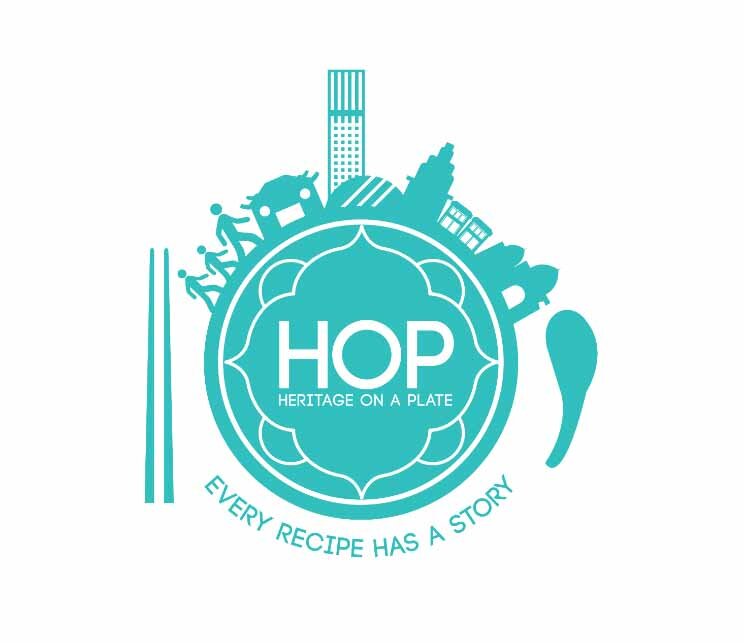What's so special about Malaysian (and Penang) food?
What’s so special about Malaysian food? I was asked this question some years back, by the owner of the restaurant where I had a weekly pop-up kitchen. I’d driven a few folks straight out with the pungent smell of belacan toasting in my wok. But once the pounded rempah for the curry paste hit the sizzling oil, their curiosity was piqued. People wanted to know exactly what was in that alluring fragrance - curry leaves, ginger, lemongrass, dark spices, fiery chilis, shallots, the infamous rotten shrimp paste. It’s that same symphonic aroma that always brings me right back to visit Malaysia.
What’s so special? The cultural diversity of places like Penang has fostered a fusion of flavours from around the globe, evolving through hundreds of years of colourful history. And that fusion tastes really good. As a food and culture geek, sure, I can wax poetic about the innovations of Baba-Nyonya Peranakan cooks, who merged peninsular Malayan ingredients with Chinese techniques and created some sublime cuisine; I can have academic debates over the origins of roti canai, and so on. But there’s much more to it than that.
Growing up in Irish Catholic Boston, the city of clam chowder, canned baked beans, and lobster, food seemed like an afterthought. Our choices were limited to the cheap and bland, the kind of food that you get from a can, from a box in the freezer, or from the drive-thru window. On special days, we’d have something special like pizza or crunchy tacos, or something "exotic", like Thai food. Once a year, we would spring for lobster and steamed clams with drawn butter, and of course there was always a big roasted bird on the table come November.
Mostly, our New England culinary heritage was nothing to brag about. Since the post-war era, we’ve simply been eating to live, dependent upon a heavily industrialised food culture for sustenance, where the concept of stimulating flavours takes a back seat to convenience and indulgent portions. For now, at least, this is not the case in Penang, where people still buy fresh produce from outdoor markets, and line up in the morning, noon, and night for curries, vegetables, braised dishes, or humble but enticingly spiced noodles. Fresh food is always available, relatively affordable, and flavourful.
When I first started cooking as a hobby and traveling abroad, Penang and Malaysia were just unread chapters buried in my pile of Southeast Asian cookbooks. Malaysia…that’s that place south of pad thai, but north of fish head curry… right?
But arriving in the Pearl of the Orient felt like going from Kansas to Oz. Everything seemed bathed in vivid Technicolor - Indian sarees, Nyonya kebayas, magnificent Straits Chinese mansions, and yes, even the food! The vibrant yellow of the turmeric-coconut milk curries and glasses of pink rose sirap, the black and red tandoori meats emerging out of clay ovens. I was hooked, instantly. Hiding from the sweltering heat in breezy Chinese kopitiams with an ice cold kopi peng, foraging for delicacies at buzzing night hawker centers, and staring down a dizzying array of curries, soups, sambals, and kerabu at Malay restaurants. I knew right then, I could get used to this.
So, what's so special about Malaysian food?
What’s really so special to me is that food is the very heart and soul of Malaysian culture, made from stock that has been simmering for hundreds of years. This is a true melting pot - each wave of merchants and settlers brings something new to the table. And Penang’s history and unique position as a former entrepot to the greatest empires of the world magnifies this effect a hundred-fold. It's full of diverse communities, where people often share their neighbour's ingredients and techniques to create new dishes. You'll see Hokkien Chinese food stalls making Malay nasi lemak, and Malay vendors selling halal versions of the Hokkien classic char kuey tiao.
Food is a source of intense pride for Penangites, and street food is the local pastime in which everyone participates, regardless of ethnicity or social status. The food is meant to nourish and stimulate. Clay pots of bak kut teh bubble with rich spices and medicinal herbs, meant to satisfy and to energise. Fresh fruit juices like starfruit and nutmeg are available at almost any hawker center, to refresh and cool in the tropical afternoon heat.
In Malaysia, food is a daily celebration of life, culture, history, and a fascinating community. And that, is why it's so special.
